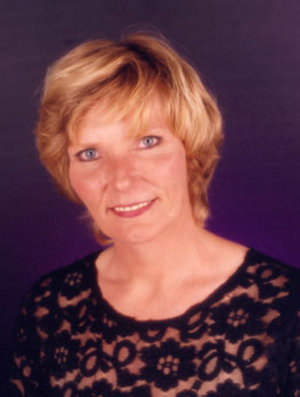- Elizabeth Larson
- Posted On
Top stories of 2009: No. 10, Woman convicted of Helbush murder returns to Sweden

LAKE COUNTY – Nearly three decades after she was sentenced to prison for the murders of a Lake County sheriff's sergeant and a Stockton restaurateur, a Swedish woman was returned to her home country, where she will be allowed to finish her prison sentence and rejoin society.
Annika Ostberg Deasy, 55, was flown home to Sweden in early April as part of an international prisoner transfer program, as Lake County News has reported.
In November, a Swedish court granted Deasy's request that her indeterminate, 25 years to life sentence be made determinate. The court gave her a sentence that amounts to about 29 years, according to Ashok Ramani, her US attorney.
That means Deasy would be eligible for release in Sweden in May of 2011, according to Swedish authorities.
Deasy was sentenced to prison in August of 1983 on two charges of first-degree murder for the spring 1981 shootings of Joe Torre of Stockton and Sgt. Richard Helbush.
Her boyfriend, William “Bob” Cox, was reported to have been the trigger man in both murders.
The couple had met with Torre to sell him some meat, during which Cox shot him. Prosecutors had alleged that Deasy tried to set Torre up, but Ramani said her defense contended that she was there for the meat sale when a confrontation began, during which Torre was killed.
While Deasy and Cox were on the run and traveling through Lake County the following night, they had a flat tire. When Helbush stopped to help them just after midnight on May 2, 1981, Cox shot him three times in the back and once in the head, took his wallet, service revolver and patrol car, and left his body by the side of the road.
The couple were captured hours later following a shootout on Cobb with local deputies and a California Highway Patrol Officer. Cox later committed suicide in jail.
Don Anderson, then a deputy with the sheriff's office, helped apprehend the couple. Today Anderson – a defense attorney – said he can see the case from more than one angle.
In an interview last month, Anderson noted that Deasy has served a long time in prison. However, he added, “Helbush was a friend of mine and not only did they kill him, she tried to kill me.”
Hopkins said this week that it's his opinion that Deasy has not taken responsibility for her part in the killings.

He cited statements she make to officers about the shootings and the shootout that followed that present “a completely different picture of her involvement than she now claims,” he said.
Hopkins said she and Cox had a pact, and that they weren't going to be taken into custody. He also alleged that she know Cox was going to kill Helbush when she distracted him by looking through her purse. During the shootout she reloaded Cox's gun and was trying to find it went he went down outside of the car. Anderson said in a previous interview that he apprehended her as she was trying to find the gun.
The decision to send Deasy home to Sweden earlier this year was condemned both by Hopkins and Sheriff Rod Mitchell, who were concerned that no local input was welcomed in the decision.
But Ramani, who worked on Deasy's efforts to return home, believes she's done just that, and that in looking at her future prospects, prosecutors have misconstrued aspects of her case.
“The prosecutors necessarily have to focus on the past,” he said.
Ramani proved a powerful ally for Deasy, whose case he began working on as lead counsel several years ago.
Keker & Van Nest LLP of San Francisco, the firm for which Ramani works, previously had represented another Swedish prisoner, Mikael Schiold, who sought, successfully, to return home after he was convicted of murdering a San Francisco contractor. As a result, the Swedish Consulate brought the firm in on the Deasy case. Keker & Van Nest worked both cases pro bono, said Ramani.
“What struck me about her case was she was such an extraordinary example of how someone actually managed to rehabilitate themselves and turn their lives around completely while in prison,” Ramani said.
He said she had far to go – and she went the distance. It would be hard to find another inmate who has made the same kind of transformation, Ramani said.
Deasy's fateful path had included drug addiction and numerous bad choices, and what Ramani said were a series of tragedies in her young life.
She came to the United States while a child, become involved in drugs and ran away from home to San Francisco, where she later was implicated in the 1974 death of Donald McKay, for which she was convicted of manslaughter, as Lake County News has reported.
But after she was sentenced for the Torre and Helbush murders, Deasy was a model prisoner with no infractions, who was in charge of the Narcotics Anonymous, and raised and trained puppies in a special program, Ramani said.
In both the United States and Sweden there has been a continuing debate over whether or not Deasy should have been returned to Sweden and whether she should be released.
In Sweden, where Deasy's case is far more well known, her case has been viewed by many as an example of an overly harsh American justice system. There, she's also been the subject of books, countless articles and a documentary by journalist Tom Alandh which features an interview with Anderson.
The fact that she was involved in the two deaths hit a nerve, said Ramani.
However, he said the argument that Deasy should remain in jail forgets a critical concept in the justice system.
When a person is sentenced to prison, it's not just to punish them, but to give them time to think about what they did and to take positive steps to turn their lives around.
It's important to remember, Ramani said, that society has decided that if prisoners take their terms seriously and reform themselves, at some point they'll get a chance to return to society.
“You have to ask yourself what else she could have done to rehabilitate herself? I don't think anything,” he said.
The Swedish courts did an exhaustive review of the American proceedings and records in Deasy's case, said Ramani, which led to the decision to set her release.
Ramani, who saw Deasy shortly before she left and has continued corresponding with her, said she thought of Sweden as a happier place, and since arriving there, “She feels like she's home.”
Mitchell said the death of a peace officer can elicit strong feelings, and for those in the law enforcement family, they can feel like “it's never long enough” when considering how long a person convicted of killing an officer should be kept in prison.
When Deasy's trial was taking place Mitchell was a young deputy who had just joined the Lake County Sheriff's Office. He said he's seen the crime scene photos and the evidence.
The fact that the law includes the possibility that someone who had a sentence like Deasy's eventually could go free is a presumption that people can grow and change, said Mitchell.
Noting that, “Addiction can drive a lot of people to a lot of things,” he said the facts of her rehabilitation may justify her release, but he didn't know enough about her circumstances to make that judgment. “Nor am I qualified to know what's in someone's heart.”
He said addiction doesn't excuse what Deasy did, and the justice system didn't overlook it, giving her a “pretty severe” sentence.
Mitchell said he hoped she owned her responsibility in the deaths of Helbush and Torre.
He said he believes in the jury system. “The best part of the system is that people who are not involved make the decision,” and it's free of emotion.
Ramani said he intends to stay in touch with Deasy, saying she's a rare client “that you really feel moved by.”
The real proof of her rehabilitation will be what she does once she's out of prison, he said.
Deasy, who remains fluent in Swedish after so many years away, is expected to go to a rehabilitation program called Basta located south of Stockholm, and may end up working as a veterinarian's assistant while continuing work in substance recovery groups, he said.
Ramani said he believes she'll do good things for Swedish society when she rejoins it in 2011.
E-mail Elizabeth Larson at This email address is being protected from spambots. You need JavaScript enabled to view it. . Follow Lake County News on Twitter at http://twitter.com/LakeCoNews and on Facebook at http://www.facebook.com/pages/Lake-County-News/143156775604?ref=mf .








